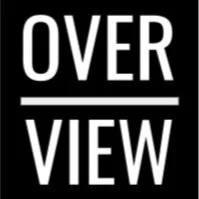Website: Luxury Residential Technology Firm
My Role: Research, Design, Implementation
Research - competitive analysis, research design, interviews, user journey analysis, insight generation & application
Design - Information architecture, mockups, prototypes, user testing
Implementation - basic design of the final product, except for final QA/QC by senior graphic designer
Target Audience:
Architects, Builders, Interior Designers, & Clients
Bozeman & Big Sky Area
Ages 45-60, All Genders, All Nationalities
Research Conducted
Method: Direct Interview
Participants were chosen based on the characteristics that matched the various target audience profiles. Direct interviews were chosen because there is a very small pool of relevant participants, and each one had either heard of or worked with the company before due to the size of the population compared to the size of the firm.
If participants were already involved with the firm, they were asked to report on the value they found in working with the firm.
Then, both types of participants were asked questions to help determine the following:
what they looked for when consulting websites of potential partners
what was most appealing for them to see
what stage of the consumer journey they were in when they went searching for the website initially.
-
Guide users either to the sales or service contact information
-
Assemble company assets into a compelling, concise website
-
Motivate users to learn about & call the company
-
The 3 primary categories of target audience all responded differently to calls to action, interactable media and static media.
-
The website owners didn’t have the firm’s value proposition explicitly stated in a way that was understandable to the users.
-
The top navigation bar was crowded and confused users, and the matrix-style layout created decision fatigue that led most users to bypass the site entirely.
Additionally, the large amount of existing content that the firm required to live on the website had very little clear organization.
Design Strategy
The main reason that people searched for the website was that they wanted to understand what the firm did, how it was done, and what they could expect when working with the company.
The original website was found to be cluttered by those who had used it. Thus, it had to be simple. This led to the consolidation of many pages into two primary information pages: Process & Results.
The site was also not engaging or stimulating, leading to the creation of several new assets, including videos and motion graphics.
This led to the refinement of the process & results pages, which in turn led to a reorganization of the entire website around a story into which any user could place themselves.
User Testing & Results
The website testing consisted of asking several users (interior designer, architect, builder & client) to find something inspiring on the site, something that proved the company’s value to them, and then to find a way to call the company.
-
Description text goes here
-
Description text goes here
-
Description text goes here
-
Description text goes here
Conclusion:
Using an existing set of pages, with the requirement that these pages stay intact, was the most challenging part of the website design process. The simplification of the site required the aggregation and categorization of all web elements into groups that satisfy user intent, but with the addition of several more engaging elements and the implementation of a brand story that aligned with user intent, the site was reshaped into an effective vehicle for company information in a way that engaged the target audience segments with what they wanted to see.
For similar projects (moving forward), the best-case scenario would make use of a broader pool of research participants, but financial constraints within the scope of this project did not allow for that. Additionally, the amount of material that the company required be kept on the website seemed superfluous to me, but this was a learning opportunity that allowed me to blend my design philosophy with that of the client and helped me learn to work with small teams and demanding clients.
